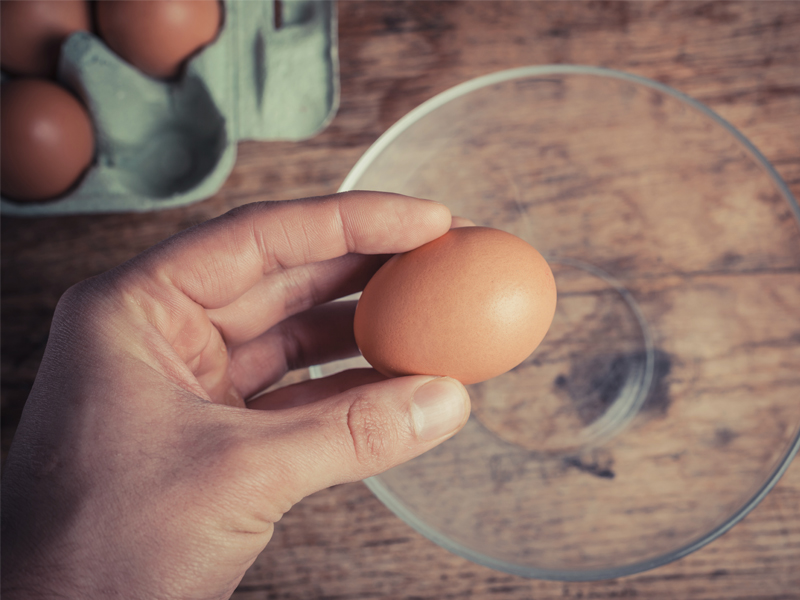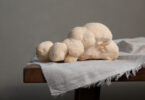It’s a question we’ve heard over and again, unless you’re a vegan—and if you are, you should’ve stopped reading this article after reading its title. How do I like my eggs? Done right. The egg, as simple as it may be, is a cornerstone ingredient. Yet it is taken for granted—it shouldn’t be. Mere seconds and the overconfidence of multi-tasking while cooking eggs will sabotage you. To this day, I still cannot cook a perfect omelet that’s perfectly golden on the outside and cooked through inside; you can YouTube Jacques Pepin for that.
Legends of eggs have proliferated throughout time. The Phoenicians believed that heaven and Earth were formed when the first egg cracked. To the Egyptians, the god Ptah created the egg from the sun and moon. For the Native Americans, the Great Spirit erupted out of an egg to create the world. And the chicken? There’s no mention of that in any of the early legends. So, maybe that answers the question as to what came first.
The legend of the Benedict hails from the 1860’s at Manhattan’s famous Delmonico’s Restaurant when a couple of regulars, Mr. and Mrs. Benedict, complained that there was nothing new on the menu. From a recipe out of a cookbook, she and the restaurant’s chef at the time, Charles Ranhofer, concocted eggs Benedict. Later on, a 1942 issue of New Yorker Magazine profiled Wall Street broker Lemuel Benedict who ordered some hangover food at the Waldorf Hotel, “some buttered toast, crisp bacon, two poached eggs, and a hooker of hollandaise sauce.”
And then there’s the legend about the Scotch egg, where one would imagine that its first successful attempt was a gift from the gods. This little soft-boiled egg delicacy—enveloped in sausage and finished with a breadcrumb crust—was made out of necessity in the Middle Ages by Scottish farmers and shepherds. It was a portable, protein packed, power bar on steroids. By the Victorian Era, they were a picnic treat for the wealth. According to luxury food emporium Fortnum & Mason, the Scotch egg was invented at its Piccadilly headquarters in the 18th century for its most affluent customers. But by the 20th century, they became known as a stale disappointment that lurked in gas stations—the British equivalent to our revolving mystery dogs that you honestly have to talk yourself out of getting each time.
Lastly, where did the significance of the Easter egg or egg on the Seder platter come from? Contrary to what you may have been told, it’s not a symbol of new life—as beautiful as that may be— but a restriction from Mother Nature during the Middle Ages, when for the most part, chickens would only lay eggs during the spring. But thanks to our modern technology, we have biologically tricked the poultry anatomy into thinking that it’s spring all year round. Yes, if it weren’t for the meddling of man, perhaps the egg would have been more than just a humble ingredient. But then again, I believe a perfectly poached egg spills liquid gold, and I’m anything but humble when I accomplish that.
Five Ways To Cook Eggs
Boil
1. Lower the eggs into the water, when the water comes to a rolling boil, allow the eggs to boil for 4 minutes for soft, 5 minutes for tender, 6 minutes for hard.
Note: Traditionally one would wait until the water is boiled to lower the eggs into the pot, but this may pose as a high breakage risk for some. Lesser fresh eggs will peel easier than fresh ones.
Bake
- Preheat the oven to 350°F. Crack the eggs individually into buttered ramekins.
- Season the eggs with salt and pepper, and a touch of cream. Place them on a baking sheet and bake for 10-15 minutes until the eggs are set.
Note: You may also use a slice of ham at the bottom of the ramekin.
Poach
- Acidulate the water by bringing a generous amount of water to a simmer in a large sauté pan and add a tablespoon or two of vinegar or lemon juice.
- Crack the egg into a ramekin and pour the egg into the water.
- Simmer the eggs for three minutes, if you like your yolks runny, or five minutes, if you prefer your yolks to be more set.
- Remove the eggs from the water using a slotted spoon and trim any ragged edges with a paring knife for a neat appearance.
Note: Use fresh eggs otherwise the whites will have a difficult time coming together.
Fry
- Melt butter in a non-stick frying pan and crack an egg into a small bowl to check for shells.
- Add the eggs to the pan. Reduce the heat to low and cook until the whites are firm and the yolks begin to thicken, about three minutes.
- For sunny-side up eggs, tilt the pan and drizzle the butter over the eggs to baste them.
- For over-easy eggs, use a nonstick spatula to flip the eggs gently and cook for about 20 seconds.
Scramble
- Beat the eggs in a bowl seasoning with salt and pepper, and a splash of milk.
- In a nonstick frying pan over medium heat add a small amount of butter and pour the beaten eggs.
- Cook the eggs and check for consistency. For a soft-textured moist egg cook them for about 4-5 minutes. For firmer, drier eggs, cook them 7-8 minutes.


